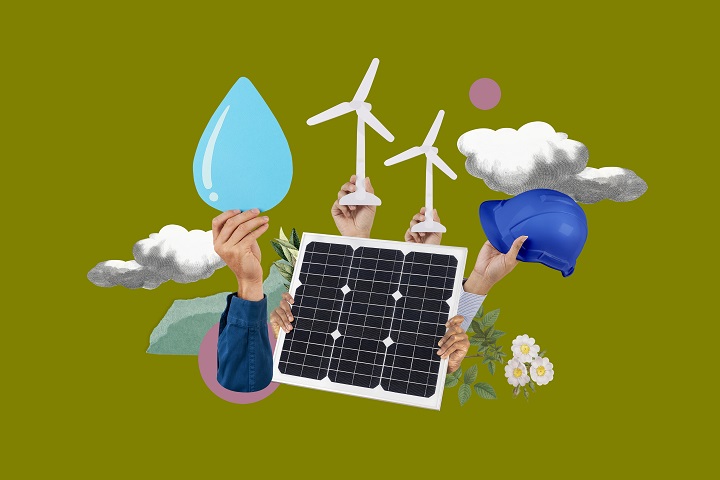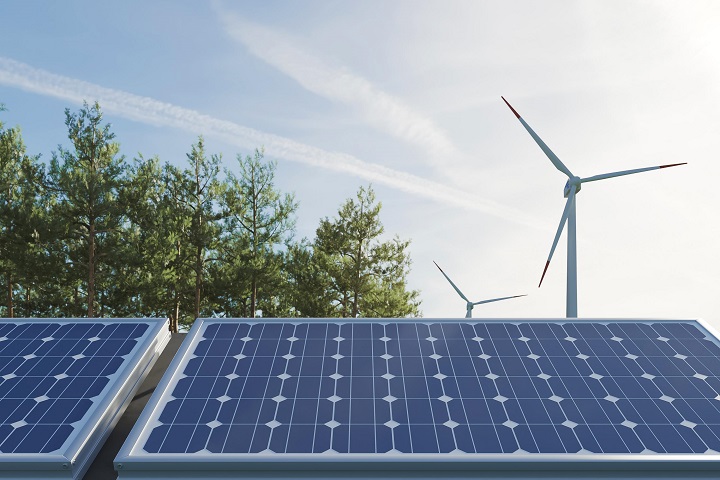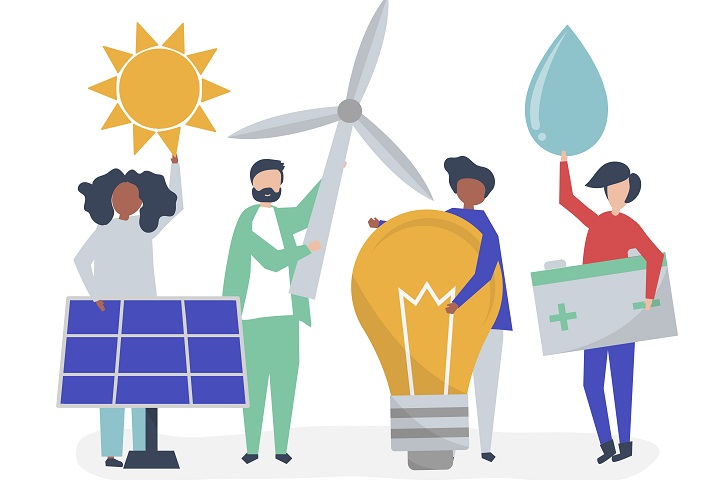How have renewable energies evolved over the years? In the 80’s it received the name of alternative energies as possible options to reduce the use of fossil fuels. Then in the 90s, the term gained greater force thanks to the installation of solar panels and wind turbines. Today, when the goal of reducing carbon dioxide emissions in the atmosphere is clear, the desire to increase the use of renewable energies is enormous and they are no longer seen as an alternative but as a prevailing need.
According to figures from the European Statistical Office (Eurostat), the increase in electricity generated from wind, solar and solid biofuels during the decade 2009 -2019 was exponential. According to the center, in 2019, renewable energy sources constituted 34% of gross electricity consumption in the European Union.
Without a doubt, solar panels and wind turbines have been transformed and modernized over time, which has allowed them to be manufactured with less energy consumption, cleaner, more flexible and economical both to produce and to maintain. The objective – as in almost everything – is to make it more efficient at the lowest cost. Nobody can ignore that at the beginning of the year 2000 the panels cost € 5 / W while now they are around € 0.2 / W. In that order, it is a verifiable fact that solar electricity costs 89% less since 2009.

An important point is the global awareness that is being acquired in terms of sustainability, the efforts that day by day are added to invest in clean resources and therefore the reduction of energy generation costs. According to the International Renewable Energy Agency (IRENA), as of 2010, the cost of energy decreased by 82% for solar PV, 39% for onshore wind and 29% for offshore wind.
The investment in the construction of new clean energy plants is much higher than in the past. One they have is that their operating costs are relatively low and do not require fuel, since they are obtained from natural resources if they are inexhaustible. In that sense, as the bulk of the investment is made in technology as such, to the extent that technology becomes cheaper, prices are reduced. For example: in 1956 a watt of photovoltaic solar capacity cost € 1,541. Over the years the effectiveness of the industry improved, the demand increased and the need to improve photovoltaic technology also. To such an extent that today a watt can cost around € 1.2. What was very expensive at first is now easily accessible and quite inexpensive. In many countries today it is more profitable to generate electricity with the sun than to do it in a large gas plant. This drop in prices and the increase in awareness of having a greener world, have driven, to mention a few, China and India to bet big on renewable energy.
It is no secret to anyone that the photovoltaic modules of the solar panels were made with silicon, in contrast to those of today that follow organic models that use carbon and have a structural flexibility that increases their adaptability to various surfaces. In fact, new modules of bifacial crystalline technology, split cell and cadmium telluride thin layer (CdTe) are in the study and development phase, which are seen as the trends of the future in the field.

As for wind turbines, the reduction of turbines is a reality today, thanks to the fact that they are now more efficient and it is not necessary to plant as many windmills as in the past, which has allowed to reduce the noise and make better use of the spaces in wind farms.
In this area, the Global Wind Energy Council published a report in 2019 entitled “Global Marine Market Outlook” and it is expected that by 2029 165,000 megawatts of power will be installed in the sea. As if that were not enough, it is estimated that offshore wind energy is the basis for sailors and serves as a backup, given that its production is stable and constant. In this way, the use of traditional coal, gas and nuclear power would be displaced.
In general, renewable energies are being modernized. The advances made in the areas of storage, hybridization, traceability and digitization have had a positive impact on its evolution. In the first place, with regard to storage, it is now possible to efficiently accumulate the energy produced in the high generation phases in terms of supplying the grid at times of high demand. Transactional storage is used for the supply-demand adjustments of the network and seasonal storage is what makes it possible for renewables to replace fossils.

Second, thanks to hybridization, today it is feasible to take advantage of several energy sources, for example, the wind and the sun at the same time, which is beneficial for the electricity supply. Likewise, the world of energy has benefited from Blockchain Technology, which makes possible greater transparency in the registration and monitoring of reliable data that can be accessed by the customer who requires a supply with clean energy.
For its part, Big Data and the Internet of Things also have their share of participation in energy processes as they are now used in order to optimize energy production by detecting patterns and anticipating any possible problem. Likewise, robotization is expected to be part of the daily routine in the cleaning of solar panels and that drones are used more frequently in the maintenance of parks and even in relation to repairs.
Another technology in vogue is that of hydrogen, which is postulated as very efficient in reducing industrial emissions. However, green hydrogen plants are still in an initial stage and in the feasibility study phase.
There is no doubt that the future of renewable energy is promising and that, although there is still a long way to go, efforts to develop a sustainable, green and low-emission world continue to be made in various sectors. IC Corporation adds little grains of sand through the work and self-sustaining models that are developed and implemented in various parts of the world with first-rate technology.

IC INTERNATIONAL GROUP
Copyright © 2024. Todos los derechos reservados
to save your favourite homes and more
Log in with emailDon't have an account? Sign up
Enter your email address and we will send you a link to change your password.
to save your favourite homes and more
Sign up with emailAlready have an account? Log in